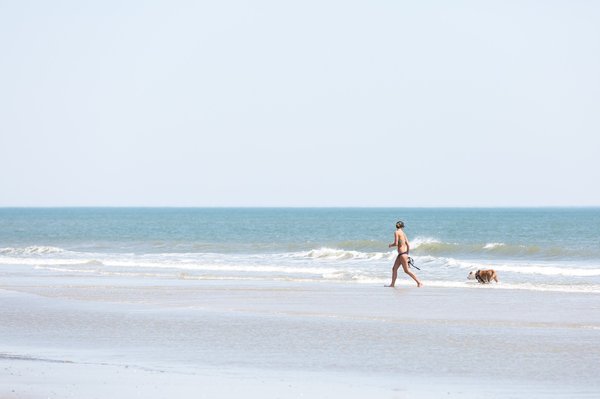More than one-third of New Jersey's beaches tested positive for unsafe levels of fecal bacteria contamination in 2018, according to a new report. The same reported showed nearly half of all beaches in the Northeastern U.S. experienced potentially dangerous levels of fecal bacteria.
The report published by the Environment America Research and Policy Center, compiled data from the National Water Quality Monitoring Council to analyze water contamination by state and region.
- RELATED ARTICLES
- A single apple has a whopping 100 million bacteria
- Delco D.A.: Man allegedly faked racist email from county employee and posed as NY Times, GMA journalists
- Federal judge: ICE must release Keith Byrne from custody
- Two dozen Philly academics: Inky coverage undermines criminal justice reform
Beaches can become unsafe if contaminated with fecal matter from water runoff, sewage leaks, and industrial-scale livestock operations. Contact with contamination can cause gastrointestinal distress, including diarrhea, vomiting, nausea, and stomach pain. It can also potentially cause respiratory disease, ear and eye infections, and skin rash.
The survey found that 48% of beaches on the East Coast tested unsafe for at least one day in 2018.
At the Jersey Shore, 133 beaches out of 356 beaches (37%) exceeded the safety threshold for fecal bacteria levels in the ocean water for at least one day. Ocean County, New Jersey, posted the worst numbers in the state last year, including Beachwood Beach West, which tested unsafe for 14 days.
Delaware beaches fared slightly better. Thirty percent of its beaches were found to be potentially unsafe for at least one day in 2018. Slaughter Beach in Sussex County was the worst offender, testing unsafe for 16 days.
The number of contaminated days at the Jersey Shore and Delaware beaches don't approach those recorded in New York and Maryland. In New York, 65% of the state's beaches and, in Marlyand, half of that state's beaches tested unsafe for at least one day last year.
Pennsylvania's beaches along Lake Erie faired the worst – 96% were found to be unsafe for at least one day. Though it's not too surprising given that the data found 75% of all Great Lakes beaches experienced high levels of fecal bacteria contamination in 2018.
For all the snow birds, 180 out of 263 beaches (68%) of Florida's were contaminated for at least a day.
The report considered beaches potentially unsafe if the water tests exceeded 60 colony-forming units of fecal bacteria per 100 milliliters. For the New Jersey Department of Environmental Protection's coastal monitoring program, the fecal bacteria threshold for safe swimming is 104 CFU per 100 milliliters of water.
On Thursday, the NJDEP reported two beaches are closed due to water quality issues – the 25th Street bay-front beach in Barnegat Light, Long Beach Island and the Windward Beach in Brick Township.
Follow Virginia & PhillyVoice on Twitter: @vastreva | @thePhillyVoice
Like us on Facebook: PhillyVoice
Add Virginia's RSS feed to your feed reader
Have a news tip? Let us know.


